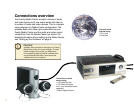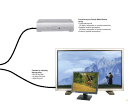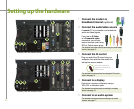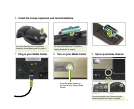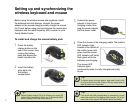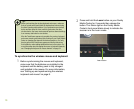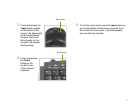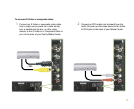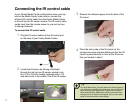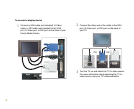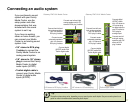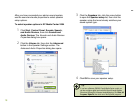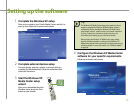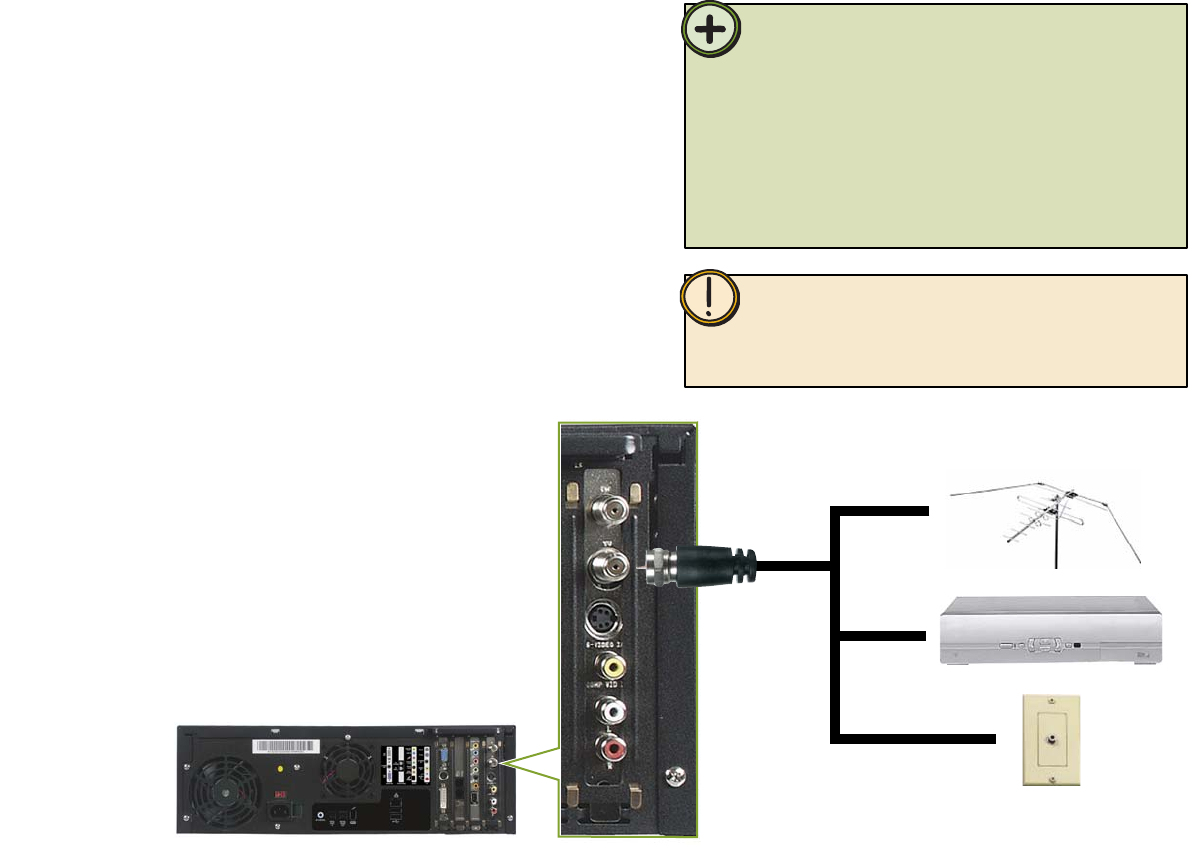
12
Caution:
Tip:
If the video devices connected to your Media Center are not
grounded correctly, your Media Center could be damaged. For more
information about correct grounding, see the safety and regulatory
information on page 103.
Connecting the audio and video source
The quality of the video coming into your Family Media Center
determines the quality of the video output to your Media Center
display device. A direct cable connection, cable set-top box, or
satellite set-top box usually provides a better quality signal than an
antenna. Use the highest quality video source available for best video
display results.
The quality of cable used to connect the video source to your Media
Center has an affect on the video output quality from your Media
Center. Use high quality video cables to connect the video source
to your Media Center.
Connect a coaxial cable (not included)
from a video device, such as a direct
cable connection, a cable set-top box,
a satellite set-top box, or an antenna,
to the Coaxial In (TV) port on the back
of your Media Center.
Your Family Media Center has connectors for coaxial (TV),
S-Video, or composite video. Select the connector that your
video source supports:
• Coaxial (TV) — The video and audio signals are both
carried on one cable. The coaxial cable is the way to
connect a direct cable or an antenna video source to
your Media Center.
• S-Video or composite video — S-Video signals
provide the sharpest picture. Alternatively, you can use
composite video for a slightly less sharp (but better than
coaxial) video signal. If you use S-Video or composite
video, you also need to connect the audio source using
RCA stereo plugs.
To connect coaxial (TV)
•



